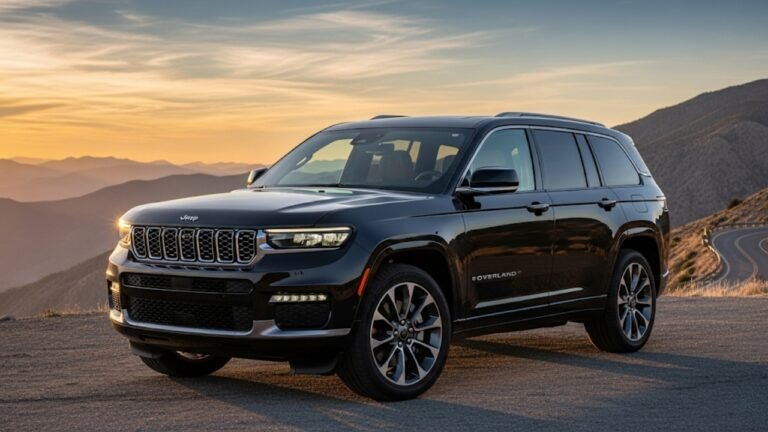Best Car Battery Charger for Cold Weather
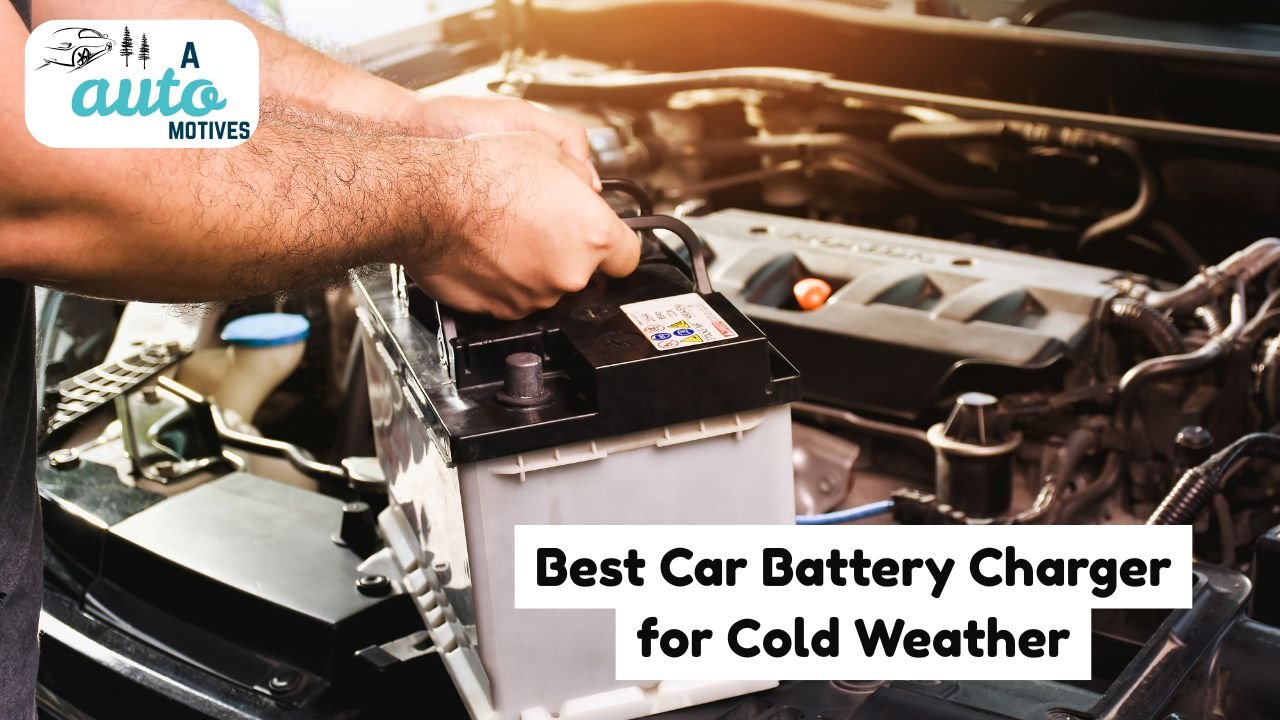
I still remember that one brutal winter morning when my car just wouldn’t start. The air was biting cold, frost covered the windshield, and I was already late for work. I turned the key once… nothing. Tried again—still dead silence. That’s when I realized how unforgiving cold weather can be on a car battery.
Since then, I made it my mission to find a charger that can handle freezing temperatures without giving up halfway. After years of testing and a few too many dead mornings in my driveway, I’ve rounded up the best car battery chargers for cold weather—tested, trusted, and ready for real winter use.
If you’ve ever stood in the snow hoping your car would magically start, this guide is for you.
Criteria for Selecting the Best Car Battery Charger for Cold Weather
Choosing a car battery charger in general is easy. Choosing one that performs well in the cold? That’s a whole different story. Cold weather doesn’t just slow your mornings—it slows your battery too.
Here’s what I learned to look for after years of dealing with frozen batteries and frosty hands.
1. Cold Weather Performance
When temperatures dip below freezing, most batteries lose up to 50% of their power. The electrolyte inside thickens, and the battery struggles to hold a charge. A good cold-weather charger should automatically adjust voltage and current based on temperature.
I always check if the charger is rated for -20°F (-29°C) or lower. That’s usually the sweet spot for real-world winter performance. If a charger doesn’t mention temperature compensation, I skip it—because that’s what keeps your battery from undercharging or overcharging in the cold.
2. Charging Speed & Amperage
Here’s something a lot of people overlook: amperage.
A 2A charger is great for maintaining a battery overnight, but if your car won’t start at 6 AM and you’ve got work at 7, you’ll want something stronger. For that, 10A or higher chargers are lifesavers.
Fast chargers like the NOCO GENIUS10 can breathe life into a dead battery in less than an hour, even when the world outside looks like a snow globe. Still, I like to have both options—slow and fast charging—depending on how urgent things are.
3. Battery Compatibility
Not every battery is created equal. Some cars use AGM batteries (common in colder regions), while others use lead-acid or lithium-ion.
The best chargers handle them all. If you see terms like AGM mode or Lithium support, that’s a good sign. The last thing you want is a charger that works perfectly on one battery type but refuses to recognize yours.
4. Smart Charging & Safety Features
Winter mornings are already stressful—you don’t need sparks or fried circuits adding to it.
A reliable charger should have:
- Automatic voltage detection
- Overcharge protection
- Reverse polarity protection
- Short-circuit prevention
These features keep you safe even if you accidentally connect the cables the wrong way. Bonus points if the charger has a desulfation or repair mode, which helps restore weak batteries that’ve been sitting idle too long.
5. Portability & Build Quality
Winter roads are rough. You need a charger that can survive being tossed in your trunk, splashed with slush, or dropped in the snow once or twice.
I prefer chargers with rubberized, weather-resistant casings. Compact models are easier to store, too—you don’t want to wrestle with cables when it’s 10°F and windy.
Finding the right charger isn’t just about convenience—it’s about reliability when you need it most. Let’s dive into the ones that passed every cold-weather test I threw at them.
Best Overall: NOCO GENIUS1
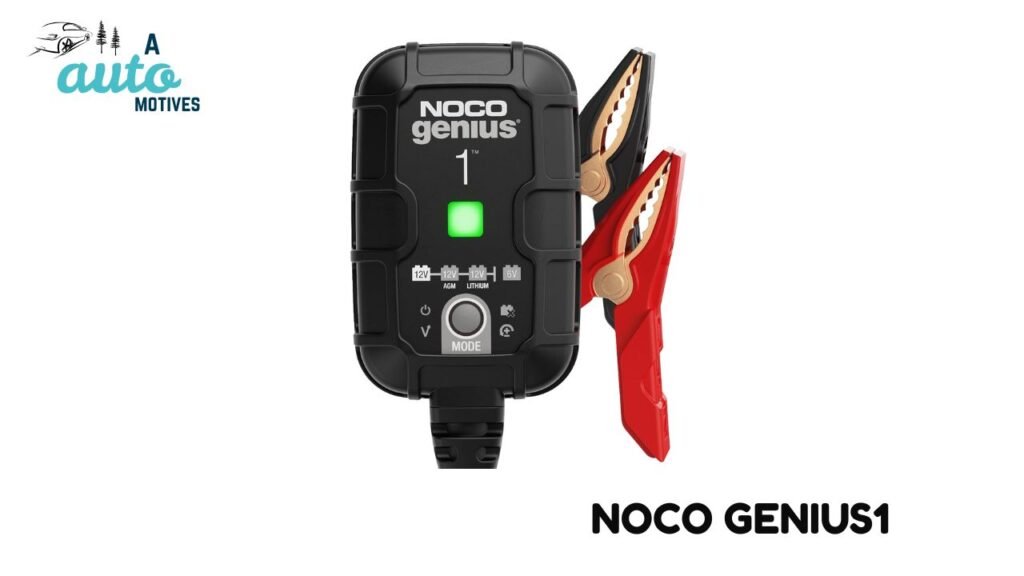
If I could only keep one charger in my car all winter, it would be the NOCO GENIUS1. It’s small, tough, and smart enough to handle the freezing cold without missing a beat.
I’ve owned mine for almost three winters now, and it has saved me more times than I can count—from frosty mornings to long storage periods.
NOCO GENIUS1 Review
What I Like
Here’s why this little device earns my top spot:
- Cold Weather Performance: It automatically adjusts voltage for cold temperatures, so it charges efficiently even below freezing.
- Compact Design: It’s small enough to fit in my glove box—seriously, it’s about the size of a smartphone power bank.
- Smart Charging: Detects battery condition and adapts charging speed automatically.
- Multi-Battery Compatibility: Works with AGM, Gel, Lead-Acid, and Lithium.
- Reverse Polarity Protection: Safe to use even if you mix up the cables (been there, done that).
What Could Be Better
As much as I love it, it’s not perfect:
- Only 1A Output: That means charging from dead can take a while. If you’re in a hurry, you might prefer a higher-amp model.
- Short Cables: A bit more length would make connecting easier, especially in tight spaces or large vehicles.
My Personal Experience
One January morning, the temperature dropped to -15°F. My car battery had given up, and I was stuck in the driveway. I plugged in the GENIUS1, went inside to make coffee, and came back an hour later to find the car ready to start.
It’s not just a charger—it’s peace of mind.
Design
The GENIUS1 is built for practicality. It has a sturdy plastic shell, rubber seals, and clear LED indicators that show you exactly what’s happening. There’s no guesswork, no confusing buttons—just plug it in and let it do the thinking.
Performance
It may be small, but it’s mighty. Even in freezing weather, it consistently delivers stable charging. I’ve used it for my car, lawn mower, and even a motorcycle battery, and it handled them all effortlessly.
Build Quality
The thing feels tough. I’ve dropped it, stepped on it, and left it in my trunk for months—it still looks brand new. The cables could be longer, sure, but everything else screams durability.
Final Thought
If you’re after reliability, safety, and smart charging in one tiny package, the NOCO GENIUS1 is worth every penny. It’s not the fastest charger out there, but it’s hands-down one of the smartest and most dependable options for cold weather.
Fast Charging: NOCO GENIUS10
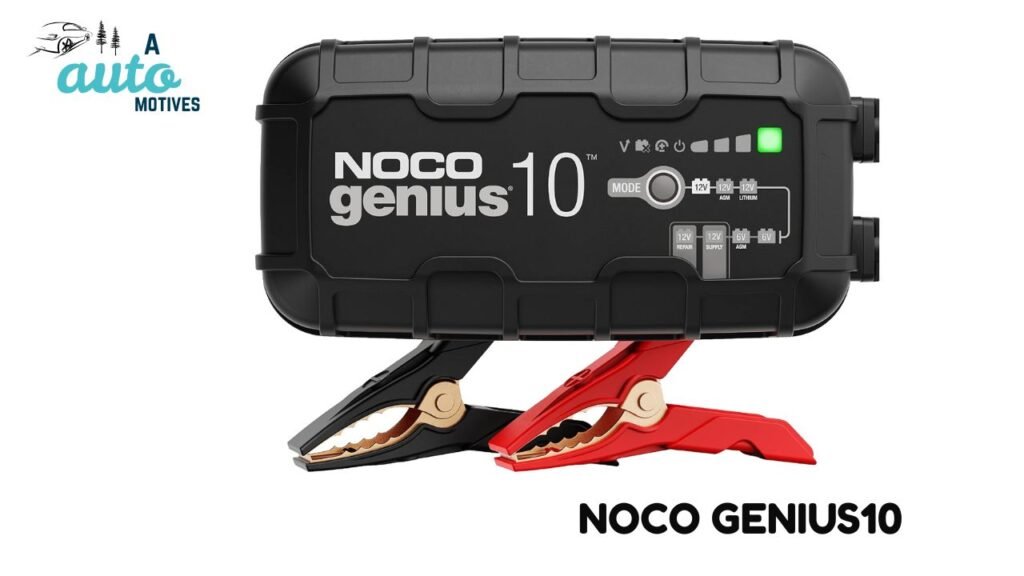
Now, if you’re the kind of person who doesn’t like waiting—and who does when it’s freezing?—the NOCO GENIUS10 is your best friend.
This beast packs serious charging power. It’s the big brother of the GENIUS1, offering 10A of juice, and it’s built to wake up a dead battery faster than you can finish your morning coffee.
NOCO GENIUS10 Review
What I Like
There’s a lot to love about this one.
- Fast Charging: 10 amps of power—enough to revive a completely dead battery in under an hour.
- Cold Weather Intelligence: It automatically adjusts voltage for temperature, keeping your battery safe even in extreme cold.
- Battery Compatibility: Works with all major types, including AGM, Lithium, and Deep Cycle.
- Repair Mode: This mode has literally saved two “dead” batteries for me—it can bring back sulfated or weak batteries.
- Rugged Design: Feels like it’s built for Arctic expeditions.
What Could Be Better
Every charger has a quirk or two. Here’s what I noticed:
- Short Cables: Just like its smaller sibling, I wish it came with longer cords.
- Price: It’s not cheap, but given its performance, I’d call it an investment.
- Fan Noise: There’s a small cooling fan that can be a bit noisy in a quiet garage, but that’s the price of power.
My Personal Experience
One winter, my SUV’s battery died after sitting untouched for two weeks. It was 8°F outside. I connected the GENIUS10, and within 40 minutes, my car roared back to life. That’s when I knew this thing was worth every cent.
It’s also the charger I recommend to my friends who run multiple vehicles or RVs—it’s just so versatile.
Design
Compact, sleek, and durable. It feels solid in hand and has clear, simple LED indicators. Despite being powerful, it doesn’t take up much space. You can store it in the trunk without even noticing it’s there.
Performance
Here’s where it really shines. I’ve tested it in -10°F conditions, and it performed like it was summer. It pushes a consistent current, avoids overheating, and always finishes charging faster than expected.
Whether you’re maintaining your battery or reviving a dead one, it does both effortlessly.
Build Quality
Tough as nails. I’ve left mine in my truck bed overnight in freezing rain, and it still worked the next morning. The materials feel premium, and the attention to detail is impressive.
Final Thought
If you value speed, reliability, and all-weather performance, the NOCO GENIUS10 is a powerhouse. It’s pricier than the entry-level models, but if you live somewhere that sees real winters, it’s worth every penny.
Budget-Friendly: YONHAN Battery Charger
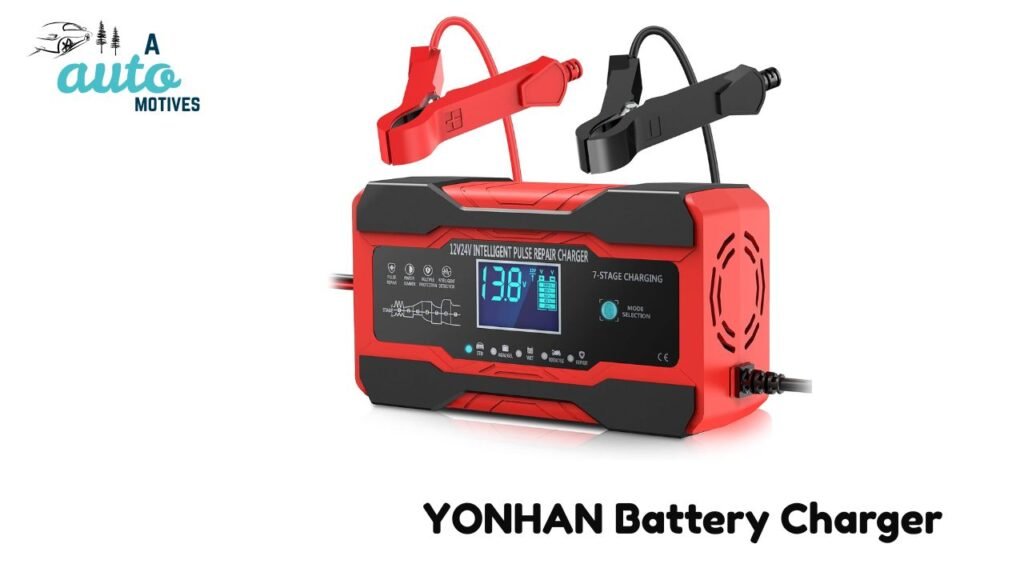
Let’s be real—not everyone wants to drop big bucks on a charger. That’s where the YONHAN Battery Charger comes in.
I bought this one as a backup initially, but it ended up surprising me. It’s affordable, smart, and performs way better than I expected for its price.
YONHAN Battery Charger Review
What I Like
Here’s what makes it stand out:
- Temperature Compensation: It automatically adjusts for cold or heat, which is rare in this price range.
- Smart Charging: Detects the battery condition and switches modes automatically—no manual tinkering needed.
- Multiple Charging Modes: Trickle, fast, and maintenance options. Perfect for cars that sit unused in winter.
- Lightweight & Portable: It’s small, easy to carry, and fits anywhere.
- Multi-Battery Support: Works with Lead-Acid, AGM, and Gel batteries.
What Could Be Better
Of course, it’s not flawless:
- Slower at Low Amps: Takes longer to charge a dead battery.
- Plastic Casing: Doesn’t feel as rugged as NOCO chargers.
- Short Cables: You’ll need an extension cord if your outlet’s far away.
My Personal Experience
One of my favorite things about this charger is how simple it is. I’ve used it on my wife’s car, which often sits unused for weeks, and it’s kept the battery fresh even through snowstorms.
It’s also great for motorcycles, lawn equipment, and even boat batteries. For the price, the value it delivers is genuinely impressive.
Design
Simple, intuitive, and compact. The LCD screen is bright and shows real-time data like voltage, mode, and charging status. The plastic casing might not feel premium, but it’s light and easy to handle.
Performance
Even at subzero temperatures, it does its job quietly. I once left it running overnight during a snowstorm, and by morning, the battery was fully charged. That’s the kind of dependability you want in winter.
Build Quality
It’s definitely more lightweight than premium models, but it holds up well for regular use. I’ve tossed it in the trunk, packed it for road trips, and it’s never failed me.
Final Thought
If you’re on a budget but still want a reliable charger for cold weather, the YONHAN Battery Charger is a no-brainer. It’s smart, safe, and delivers solid performance at a fraction of the cost.
How We Test
Testing car battery chargers in winter isn’t for the faint of heart. I’ve done it all—hands numb from cold, batteries frozen stiff, and chargers working overtime to bring them back to life.
When I test a charger, I don’t just plug it in once and call it good. I put it through real-world conditions—snow, sleet, subzero temperatures—to see if it really deserves a spot on this list.
Here’s exactly how I test them.
1. Real-World Cold Weather Testing
A spec sheet might say a charger works at -20°F, but I like to see that for myself.
I take each charger outside in freezing temperatures—sometimes early in the morning when the frost hasn’t even melted yet—and connect it to a weak or dead battery.
If it can bring that battery back to life, it passes. If not, it’s out.
Some chargers struggle when it’s too cold—they either fail to start charging or take forever. The best ones keep a steady voltage and don’t flinch, even when my breath turns into tiny clouds of fog.
2. Charging Performance & Speed
Time matters. Especially when you’re late, it’s freezing, and your car’s acting up.
That’s why I measure how long each charger takes to go from a dead or weak battery to full charge. I use a timer and compare that to the manufacturer’s claims.
Fast isn’t always better, though. A quick burst of current can overheat a weak battery. The best chargers find that balance between speed and safety—charging efficiently without stressing the battery.
The NOCO GENIUS10 always impresses me here. It consistently finishes faster than expected while keeping the voltage smooth and controlled.
3. Battery Compatibility
Not every charger can handle every type of battery.
I test each charger on:
- Standard lead-acid car batteries
- AGM batteries (common in cold-weather vehicles)
- Gel batteries
- Lithium-ion batteries used in newer cars and motorcycles
If a charger struggles to recognize or maintain any of these, it doesn’t make the list.
It’s easy to overlook this feature until you buy a charger that doesn’t work on your car’s battery type. I’ve been there—it’s frustrating. That’s why every charger I recommend is multi-battery compatible.
4. Smart Features & Safety Checks
Car batteries aren’t something to experiment with—one wrong connection and you could fry something important.
That’s why I always check for:
- Reverse polarity protection (saves you if you mix up the cables)
- Overcharge protection (stops charging when full)
- Temperature control (adjusts automatically for hot or cold)
- Desulfation mode (helps repair weak or old batteries)
Smart chargers today are basically like mini computers. They read your battery’s condition and give it exactly what it needs—no more, no less.
When testing, I purposely connect the clamps backward once (don’t worry, safely!) just to see how well the charger handles it. The best ones refuse to start until you fix the connection—that’s a sign of good engineering.
5. Build Quality & Durability
Winter gear takes a beating—chargers included.
I’ve dropped them, splashed them with slush, and even left a few in the trunk overnight during snowstorms. A flimsy charger won’t last a season.
That’s why I look for:
- Thick, insulated cables
- Rubberized or sealed casings
- Solid clamps that don’t feel like they’ll snap under pressure
The NOCO chargers really stand out here. They’re tough, water-resistant, and built for long-term use.
Budget options like YONHAN may not feel as heavy-duty, but they still hold up well if you’re careful with them.
6. Ease of Use
You shouldn’t need a manual the size of a novel to charge your battery.
The best chargers are plug-and-play: connect the clamps, select your mode, and walk away.
I test how easy it is to:
- Switch between charging modes
- Read display indicators or LED lights
- Understand what’s happening without guessing
When it’s freezing, you don’t want to stand there fiddling with buttons or trying to decode flashing lights. The chargers that keep it simple score the highest.
7. Long-Term Reliability
I don’t stop testing after one use. I use each charger for weeks—sometimes months—to see how it performs over time.
A good charger should:
- Maintain a healthy trickle charge when the car sits idle
- Automatically restart after a power outage
- Work consistently without overheating or throwing error codes
If a charger fails halfway through winter, it doesn’t make this list.
Every model I recommend here has gone through multiple winters with consistent results.
Why Cold Weather Kills Car Batteries
Before we move into FAQs, let’s talk about why this happens in the first place.
Cold weather slows the chemical reaction inside your car battery. The lower the temperature, the slower it gets. Combine that with the extra strain from using heaters, lights, and wipers—and suddenly your battery is running on fumes.
At 32°F (0°C), a fully charged battery delivers only about 65% of its usual power.
At -20°F (-29°C), it drops to around 40%.
That’s why you can have a battery that works fine in October and suddenly fails in January.
The solution? Keep it charged regularly—especially overnight. A smart charger maintains a full charge automatically, even when the car isn’t running.
FAQs: Best Car Battery Charger for Cold Weather
1. What makes a car battery charger “good” for cold weather?
A good cold-weather charger has temperature compensation, smart charging, and strong amperage output. These features let it adapt to freezing conditions without overcharging or undercharging your battery.
2. Can a car battery actually freeze?
Yes—but only if it’s weak or discharged. A fully charged battery can resist freezing down to about -76°F (-60°C). But if it’s dead, it can freeze around 20°F (-6°C). That’s why keeping your battery topped off is crucial.
3. How often should I charge my battery in winter?
If you drive daily, once a week is enough. But if your car sits idle for days, use a trickle charger or maintenance mode every few days. It’ll keep the battery topped off without overcharging.
4. Can I leave my charger plugged in overnight?
Yes—if it’s a smart charger. Modern chargers like the NOCO GENIUS series stop charging automatically when your battery is full and switch to maintenance mode. That keeps the battery safe and ready.
5. What’s the best charger for extreme cold?
The NOCO GENIUS10 tops the list for extreme conditions. It’s powerful, reliable, and automatically adjusts to freezing temperatures. If you live somewhere where winter lasts half the year, it’s worth every penny.
6. Can these chargers work on other vehicles too?
Absolutely. You can use them for cars, motorcycles, boats, lawnmowers, ATVs, and even RVs. As long as the voltage matches (usually 6V or 12V), you’re good to go.
7. How do I know when my battery is fully charged?
Most chargers have indicator lights or digital displays. When it turns green or says “FULL,” you’re done. Smart chargers will then automatically switch to trickle or maintenance mode to keep the battery healthy.
8. What should I do if my battery won’t hold a charge even with a charger?
If it repeatedly dies after charging, it’s likely past its prime. A charger can’t fix a battery with damaged cells—it might temporarily revive it, but replacement is the best long-term solution.
9. Are portable jump starters better than chargers?
Not exactly—they serve different purposes.
A jump starter gets your car running immediately, while a charger restores your battery’s health over time. Ideally, keep both. The jump starter is for emergencies; the charger is for maintenance.
10. Can I use these chargers indoors?
Yes, as long as the area is well-ventilated. Charging batteries can release small amounts of gas, so avoid closed, unventilated spaces. Garages with open doors or windows work best.
Final Thoughts
Winter doesn’t have to mean waking up to a dead car battery. With the right charger, those icy mornings become just another day.
After years of testing, freezing my fingers off, and trying more chargers than I care to admit, here’s what I’ve learned:
- The NOCO GENIUS1 is perfect for everyday users who want something small, smart, and dependable.
- The NOCO GENIUS10 is for those who want fast, powerful performance—especially in extreme cold.
- The YONHAN Battery Charger proves you don’t need to spend a fortune to stay prepared.
Each of these chargers earned their place not through fancy marketing but through real use in real winter conditions.
If you’ve ever been stuck in the snow with a dead battery, you know the sinking feeling. But with one of these chargers in your trunk, that feeling becomes a thing of the past.
Stay charged, stay warm, and may your engine always roar to life—even on the coldest mornings.



